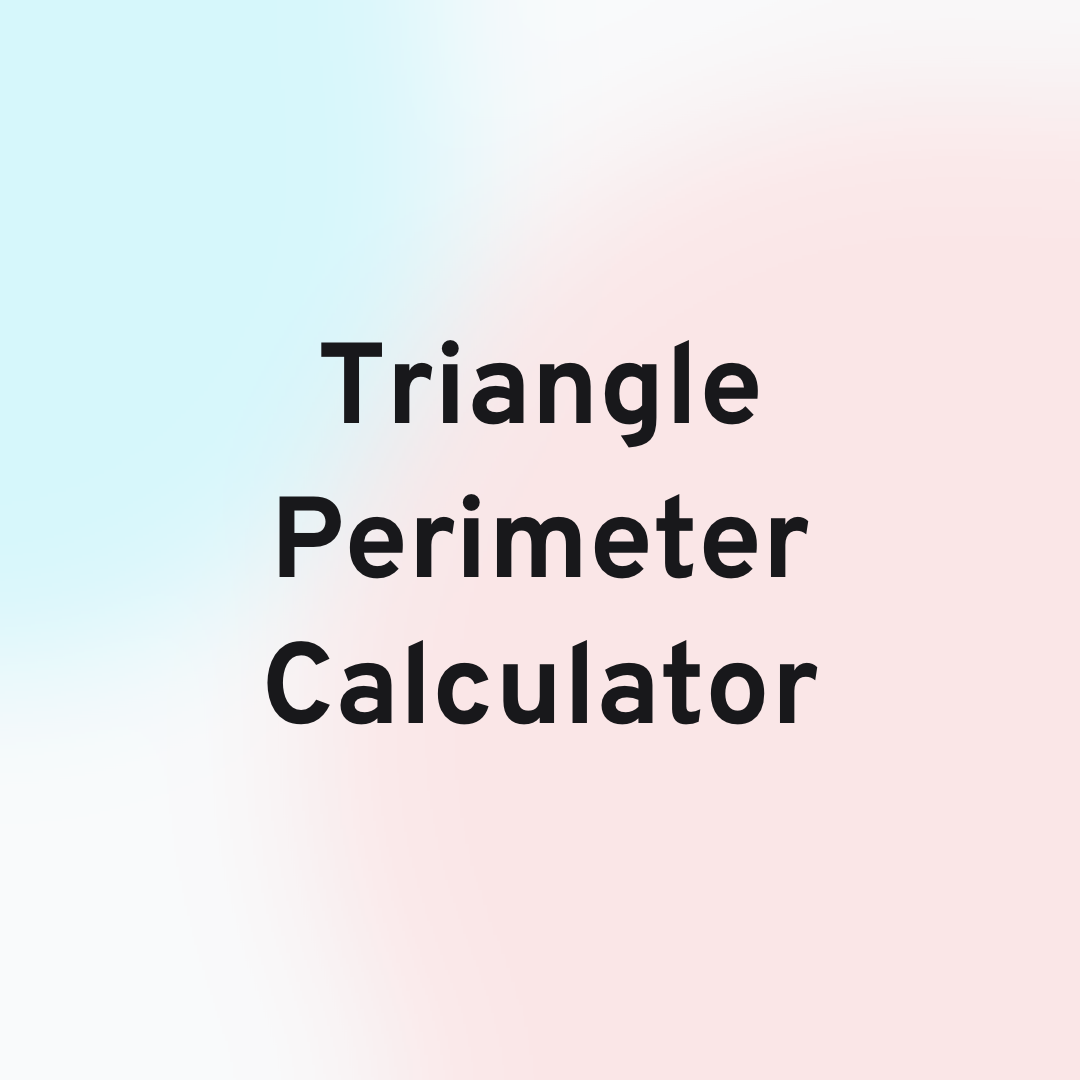
Mathematics
Geometry
Triangle Perimeter Calculator
Calculate the triangle's perimeter quickly and easily using our nifty and user-friendly Triangle Perimeter Calculator! Try it out now!
Welcome to our Triangle Area Calculator! which will help you calculate the triangle’s area quickly and accurately. A triangle is a polygon with three sides and three angles. The shape is formed when three straight lines meet. The point at which the lines meet is called a vertex, and a triangle has three vertices.
The area of the triangle is defined as the space within the triangle’s three sides. So, it depends on the length of the sides and the internal angles of the triangle.
Using the Triangle Area Calculator you can calculate the area of the triangle using multiple methods
We can calculate the area of triangle using the following methods
The variables in the Triangle Area Calculator include:
Base (b)
The length of the base of the triangle.
Height (h)
The length of the triangle’s altitude is the perpendicular drawn from the vertex to the opposite side.
Triangle Area (A)
We can calculate the area of the triangle using the following formula.
We can also calculate the area of the triangle using Heron’s Formula. We use this formula when we want to calculate the area of the triangle using the length of the three sides.
The variables in the Triangle Area Calculator include:
1st Side (a):
Length of 1st Side
2nd Side (b):
Length of 2nd Side
3rd Side (c):
Length of 3rd Side
Triangle Area (A)
We can calculate the area of the triangle using the following formula.
Where,
s = Semi-perimeter of the triangle
We can also calculate the area of a triangle when we have the length of two sides and the included angle of the triangle.
The variables in the Triangle Area Calculator are:
Side 1 (a)
Length of one side of the Triangle
Side 2 (b)
Length of the second side of the Triangle
Included Angle (A)
The angle between Side 1 (a) and Side 2 (b) is in degrees.
Triangle Area (S)
We can calculate the area of the triangle using the following formula.
We can also calculate the area of the equilateral triangle, where all sides are equal.
The variables in the Triangle Area Calculator include:
Length of Side (a) The length of a side of an equilateral triangle.
Area of the Equilateral Triangle (Area) We can calculate the area of the equilateral triangle using the following formula
We can also calculate the area of an Isosceles Triangle, which has two sides equal.
The variables in the Triangle Area Calculator include
Base (b) The length of the base of the triangle.
Equal Side Length (a) The length of one of the equal sides.
Area of a triangle (Area) The area of the triangle is calculated using the formula
A triangle is a 2-dimensional shape with three sides, it also has three interior angles and three vertices. The sum of the internal angles will always be equal to 180 degrees.
Basically, triangles can be classified based on the length of their sides or based on their angles.
Based on the Length of the Sides
Based on the Angles
The area of the triangle can be calculated using multiple methods as shown below.
You can calculate the area of the triangle by using the basic formula, where we require the base and the perpendicular height of the triangle to calculate the area.
You could also calculate the area of the triangle by using Heron’s formula. This formula is used when we have all the sides of the triangle and we need to calculate the area.
Where,
s = Semi-perimeter of the triangle
Another method for calculating the area of the triangle when we have two sides of the triangle and the included angle is called the SAS method. You could use the following formula to calculate the area.
Where,
a = 1st Side of the Triangle
b = 2nd Side of the Triangle
A = Included angle between a and b
Where,
a = Side of the equilateral triangle
Where,
b = base of the triangle
a = Length of one of the equal sides
A triangle has a base of 4cm and a height of 6cm, what is the area of the triangle?
We can calculate the area of the triangle using the following formula.
A triangle has 2 sides of 5 cm and one side of 6 cm what is the area of the triangle?
The area of the triangle, for which we know the length of the sides can be calculated by Heron’s formula.

Mathematics
Geometry
Calculate the triangle's perimeter quickly and easily using our nifty and user-friendly Triangle Perimeter Calculator! Try it out now!
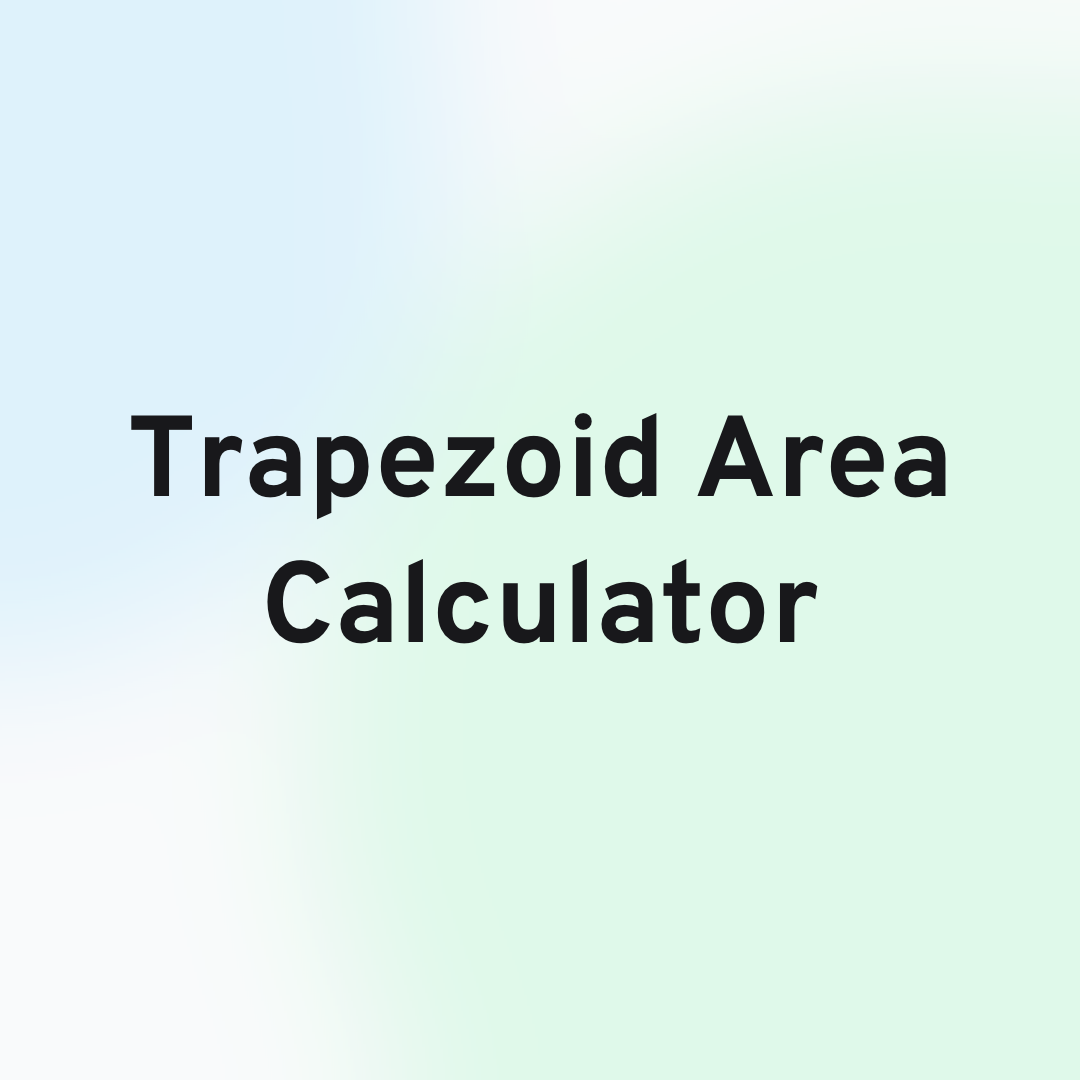
Mathematics
Geometry
Calculate the Trapezoid's area quickly and accurately using our nifty, user-friendly Trapezoid Area Calculator! Try it out now!
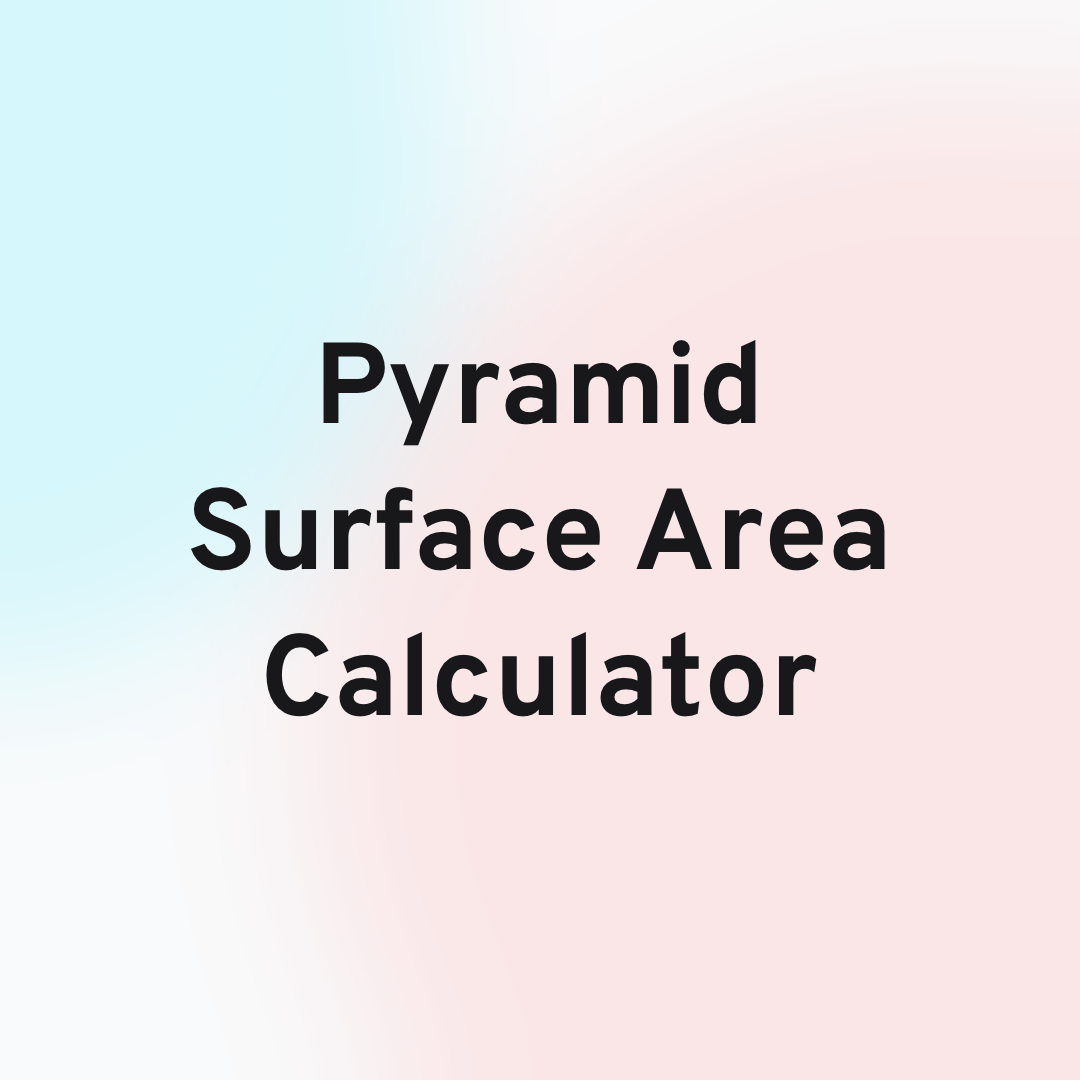
Mathematics
Geometry
Calculate the surface area of the Triangular pyramid, Square Pyramid, Pentagonal Pyramid with ease using our Pyramid Surface Area calculator!
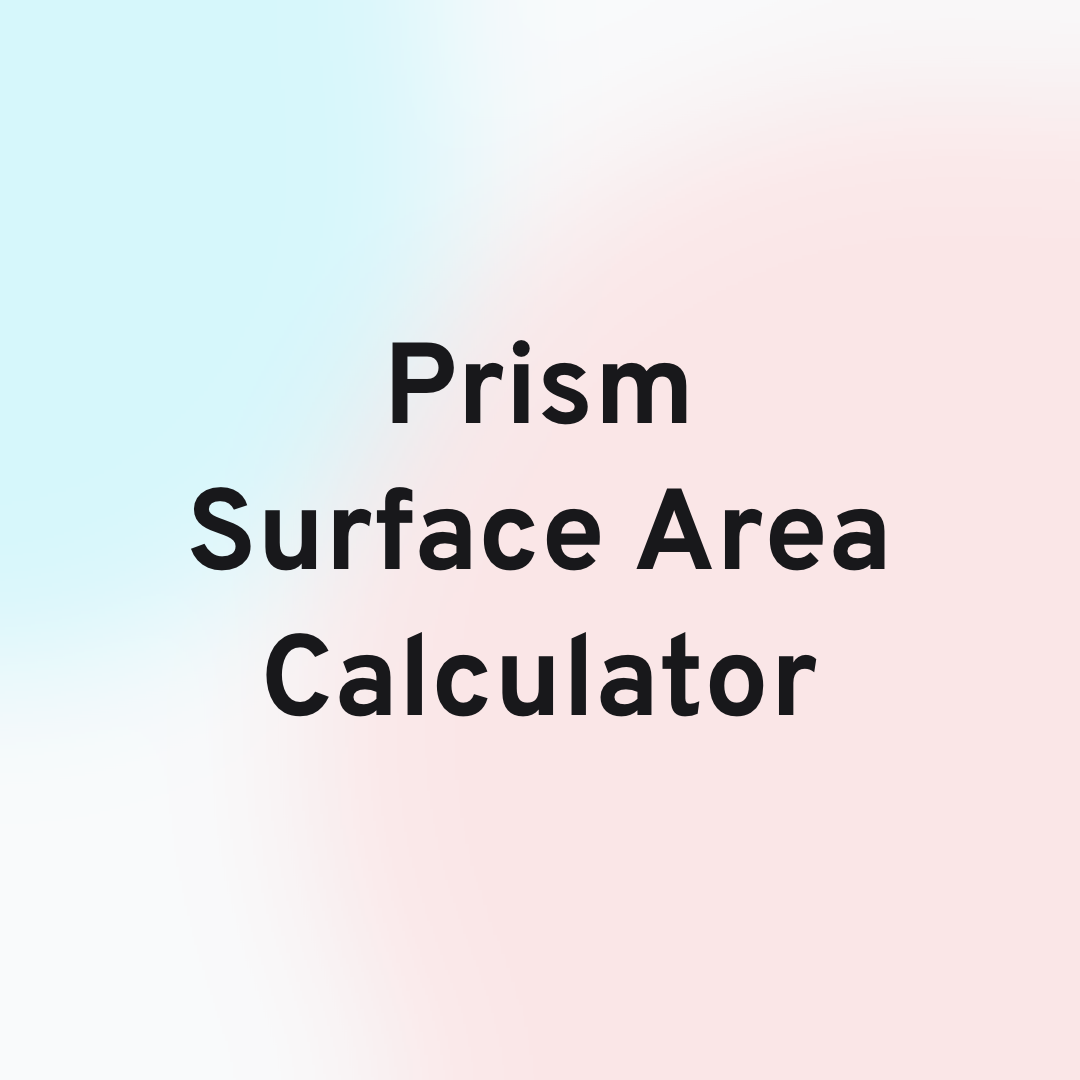
Mathematics
Geometry
Calcuate Surface Area of Triangular, Square, Rectangular, Pentagonal, Hexagonal and Octagonal Prisms using our Prism Surface Area Calculator!
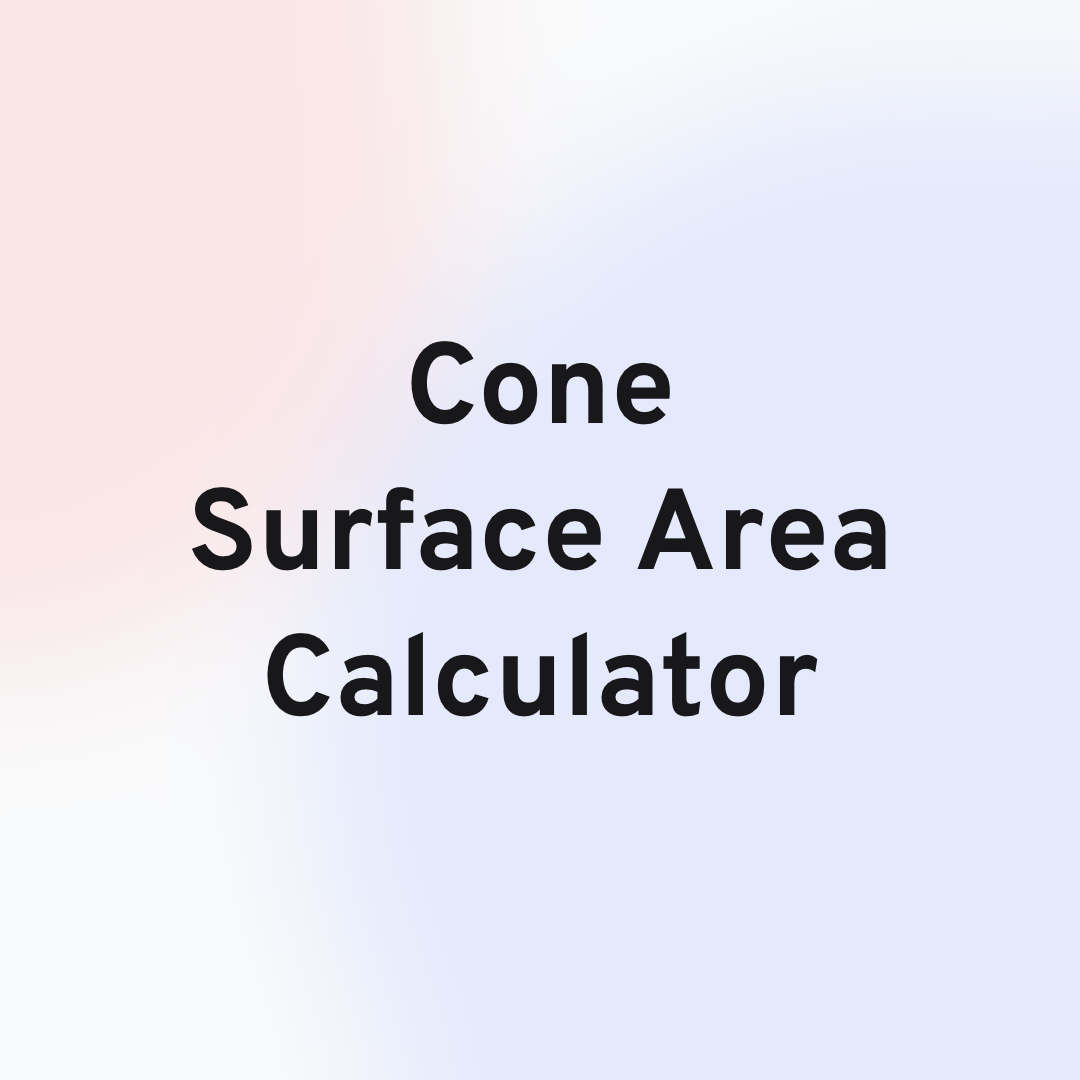
Mathematics
Geometry
Calculate the lateral and total surface area of the Cone with ease using our nifty Cone Surface Area Calculator!
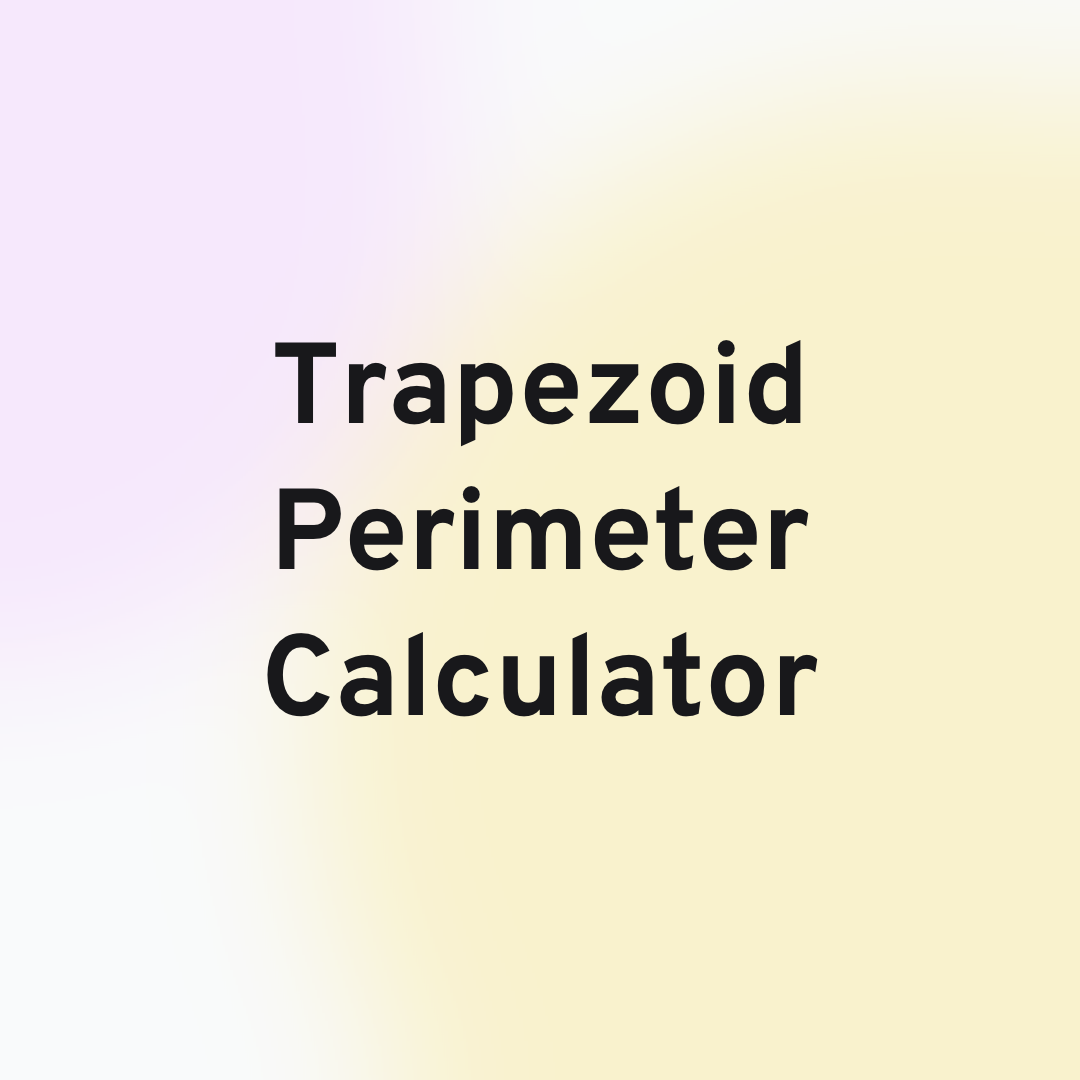
Mathematics
Geometry
Quickly calculate the perimeter of the trapezoid using our nifty Trapezoid Perimeter Calculator! Try it out now!